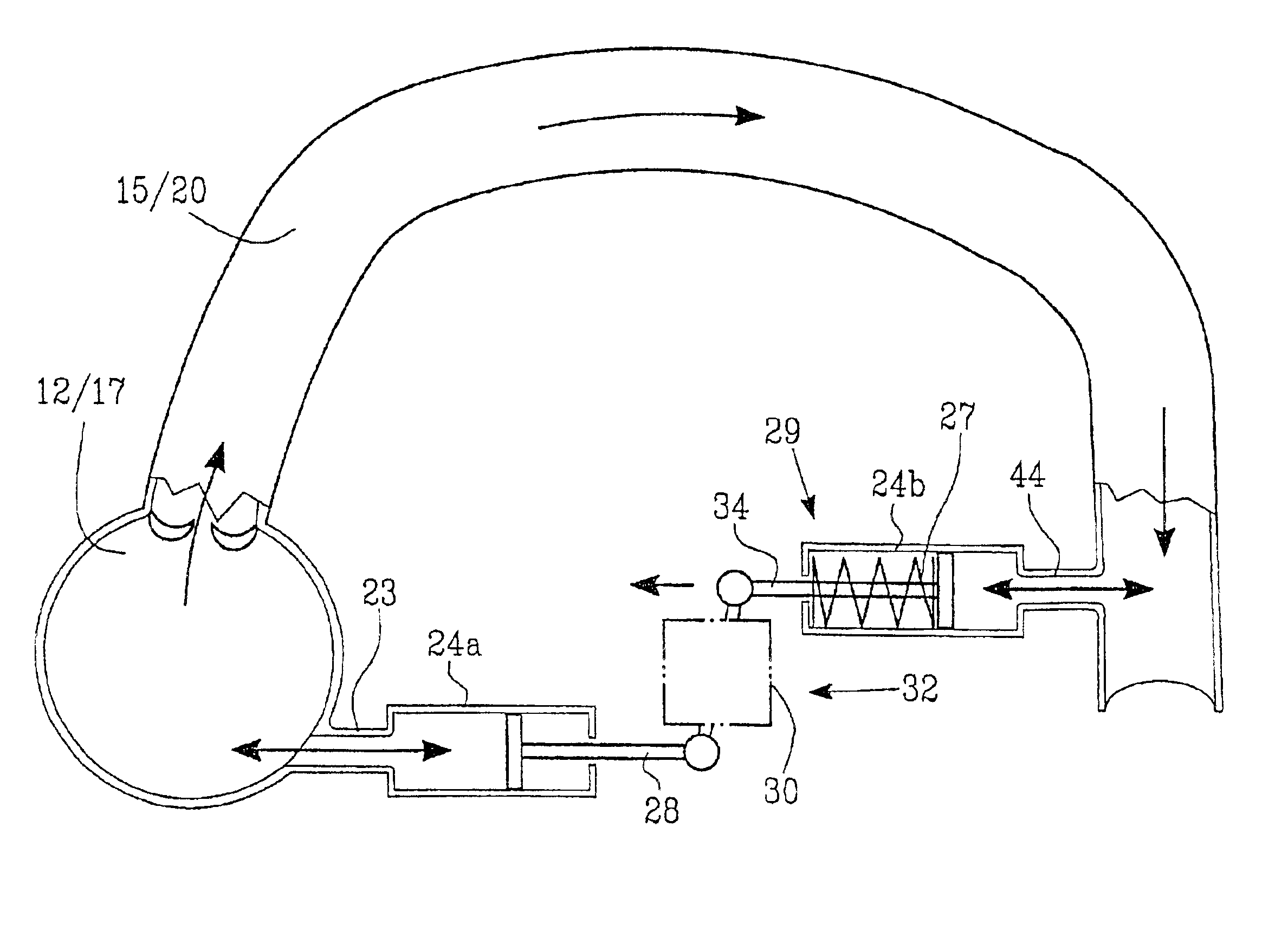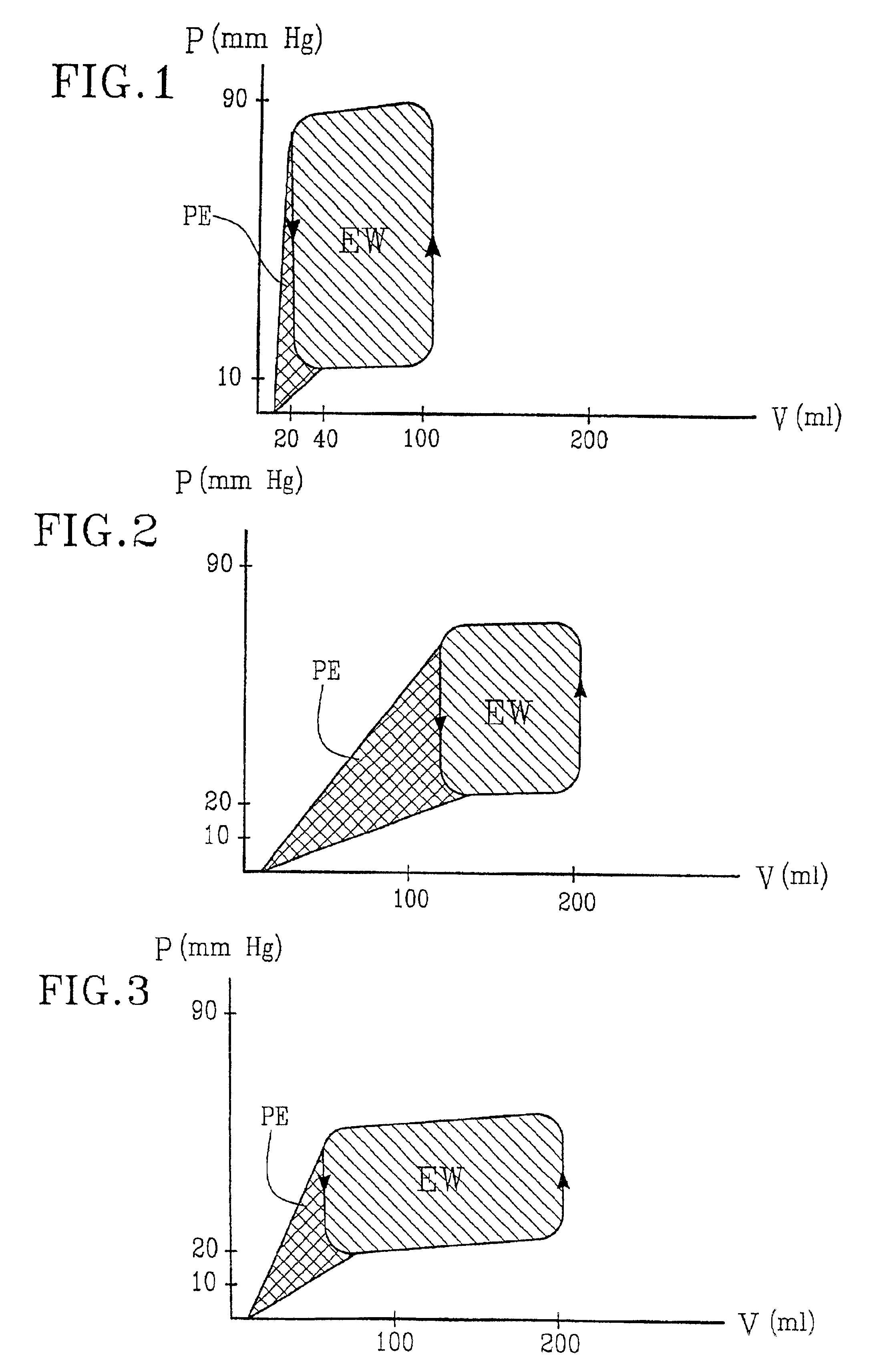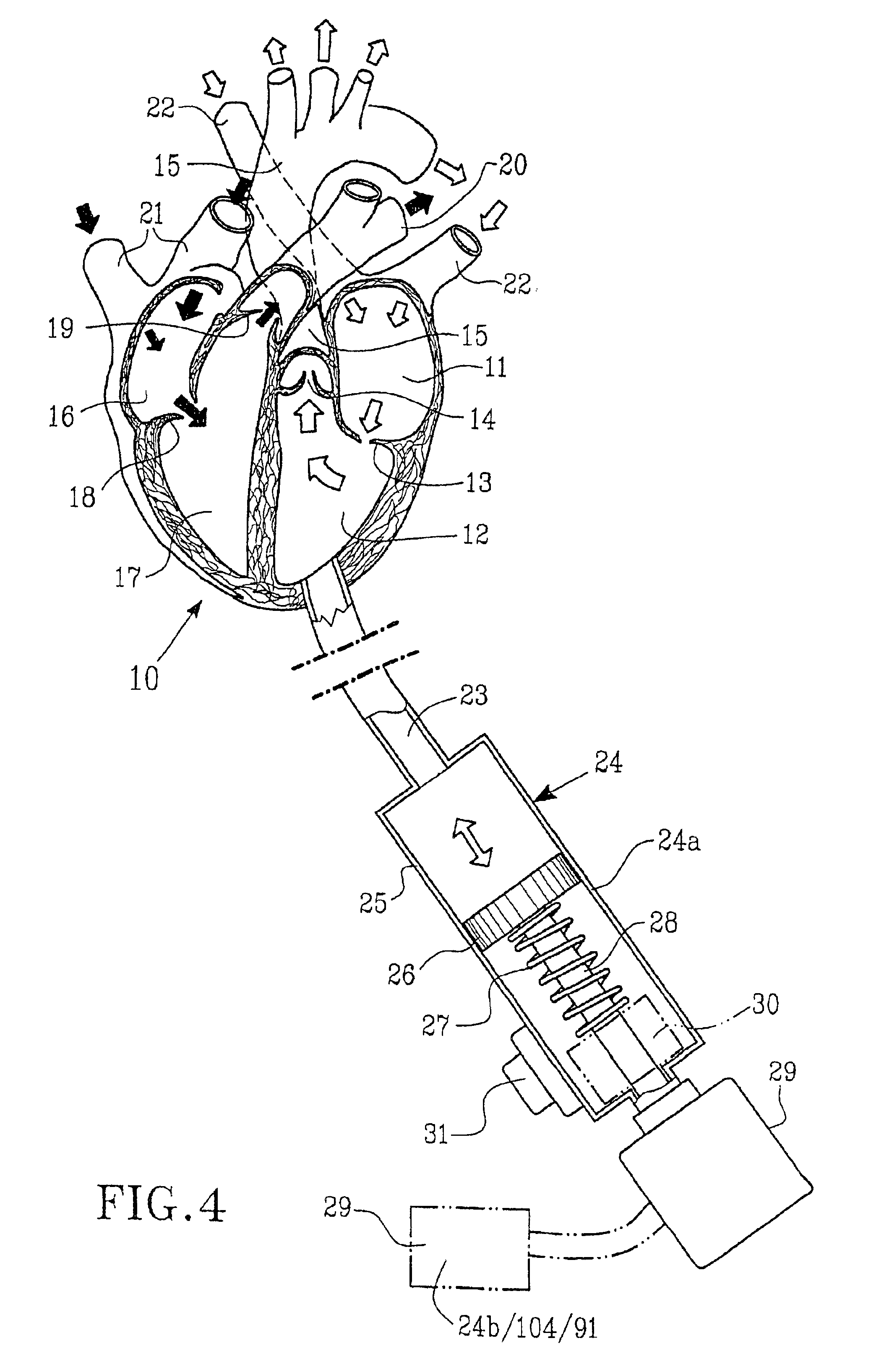Implantable device for utilization of the hydraulic energy of the heart
a technology of hydraulic energy and implantable devices, which is applied in the direction of prosthesis, wound drains, therapy, etc., can solve the problems of limiting the degree of freedom of patients to special rooms or trolleys equipped with batteries and computers, affecting the patient's health, and affecting the patient's life, so as to achieve the effect of reducing the risk of strok
- Summary
- Abstract
- Description
- Claims
- Application Information
AI Technical Summary
Benefits of technology
Problems solved by technology
Method used
Image
Examples
Embodiment Construction
To get e better understanding of the invention, FIG. 4 demonstrates a human heart 10 partly in a 3 dimensional presentation, where 11 indicates the left atrium, 12 the left ventricle, 13 the mitral valve, 14 the aortic valve, 15 the main body artery (the aorta), 16 the right atrium, 17 the right ventricle, 18 the tricuspid valve, 19 the pulmonary valve, 20 the pulmonary artery, 21 two caval veins and 22 four pulmonary veins.
The blood is pumped from the circulatory system of the body (the periphery) via the two caval veins 21 to the right atrium 16, passes through the tricuspid valve 18 to the right ventricle 17 and is pumped through the pulmonary valve 19 to the pulmonary artery. In the lungs the blood absorbs oxygen and continues its flow to the pulmonary veins 22 to the left atrium 11 and further via the mitral valve 13 to the left ventricle 12, which pumps out the blood through the aortic valve 14 to the main body artery 15.
To the lower part of the left ventricle 12 is connected,...
PUM
 Login to View More
Login to View More Abstract
Description
Claims
Application Information
 Login to View More
Login to View More - R&D
- Intellectual Property
- Life Sciences
- Materials
- Tech Scout
- Unparalleled Data Quality
- Higher Quality Content
- 60% Fewer Hallucinations
Browse by: Latest US Patents, China's latest patents, Technical Efficacy Thesaurus, Application Domain, Technology Topic, Popular Technical Reports.
© 2025 PatSnap. All rights reserved.Legal|Privacy policy|Modern Slavery Act Transparency Statement|Sitemap|About US| Contact US: help@patsnap.com



